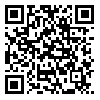دوره 10، شماره 39 - ( فصلنامه علمی پژوهشی رفاه اجتماعی 1389 )
جلد 10 شماره 39 صفحات 471-445 |
برگشت به فهرست نسخه ها
Download citation:
BibTeX | RIS | EndNote | Medlars | ProCite | Reference Manager | RefWorks
Send citation to:



BibTeX | RIS | EndNote | Medlars | ProCite | Reference Manager | RefWorks
Send citation to:
Abdi Zarrin S, Adib Rad N, Younesi S J, Asgari A. (2011). Relationship between Identity Styles with Self-Efficacy in Iranian and Afghan High School Boys. refahj. 10(39), 445-471.
URL: http://refahj.uswr.ac.ir/article-1-352-fa.html
URL: http://refahj.uswr.ac.ir/article-1-352-fa.html
عبدی زرین سهراب، ادیب راد نسترن، یونسی سید جلال، عسگری علی.(1389). رابطۀ سبکهای هویت با خودکارآمد پنداری دانش آموزان پسر دبیرستانی ایرانی و افغانی ساکن قم رفاه اجتماعی 10 (39) :471-445
چکیده: (10458 مشاهده)
Objective: The aim of this study was to investigate the relationship between
identity styles and self-efficacy beliefs (personal and collective) and to compare
them in Iranian and Afghan high school student boys who inhabit in Qom city.
This study is of a special importance since it is a multi-cultural and comparative
study between Iranian and Afghan nations.
Method: Subjects were selected from all the high school students of the Qom
city. They were 231 Iranian high school boys and 132 Afghan high school boys.
By cluster sampling, we chose two region from four and two schools from each
region. We used Berzonsky’s Identity Styles Questionnaire, Bandura’s Personal
Self-Efficacy Beliefs and Kim and Park Collective Self-Efficacy Beliefs.
Finding: There was a significant direct relationship between informative identity
style and normative identity style with personal self-efficacy beliefs and
collective self-efficacy beliefs. On the other hand, a significant negative
relationship was observed between confused identity style and identity
commitment.
Conclusion: Informative identity style with collective self-efficacy beliefs and
normative identity style with personal self-efficacy beliefs and collective selfefficacy
beliefs was higher in Afghan high school boys.
واژههای کلیدی: بهداشت روانی، خودکارآمد پنداری جمعی، خودکارآمد پنداری فردی، سبکهای هویت، موفقیت تحصیلی.
| بازنشر اطلاعات | |
 |
این مقاله تحت شرایط Creative Commons Attribution-NonCommercial 4.0 International License قابل بازنشر است. |





